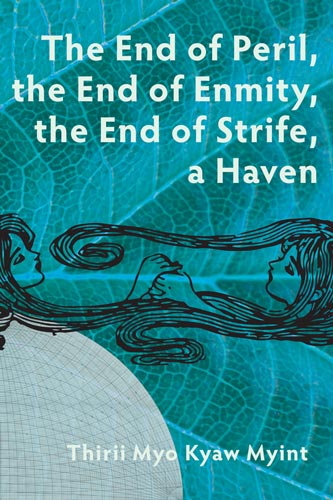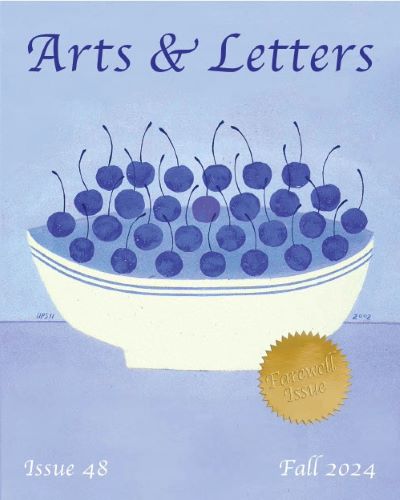The End of Peril, the End of Enmity, the End of Strife, A Haven
A good example of what independent presses have to offer is Thirii Myo Kyaw Myint’s The End of Peril, the End of Enmity, the End of Strife, A Haven. No formulaic pap, no ‘been there, done that.’ Just fine, original storytelling. At first I tried to pin down a genre for Myint’s book. Then I relaxed and let her story take me to a horrific ecological event that ruins a city and upends the lives of its people, all who are unnamed. We have the narrator, her family, and “the baby.” There is also a friend called “the girl” and assorted others, including a king and his family and numerous enemies.
A good example of what independent presses have to offer is Thirii Myo Kyaw Myint’s The End of Peril, the End of Enmity, the End of Strife, A Haven. No formulaic pap, no ‘been there, done that.’ Just fine, original storytelling. At first I tried to pin down a genre for Myint’s book. Then I relaxed and let her story take me to a horrific ecological event that ruins a city and upends the lives of its people, all who are unnamed. We have the narrator, her family, and “the baby.” There is also a friend called “the girl” and assorted others, including a king and his family and numerous enemies.
The book takes place in two cities: One is the large harbor city, the other is a manmade domed city that protects its inhabitants from what’s going on outside the dome. The domed city is never given a formal name, but we learn that the king’s men retreated into it “when they could no longer hold back the enemy. The end of peril, they called the city. The end of enmity. The end of strife. It meant all of those things. The city was their haven.”
At some point the protective dome is compromised by what Myint terms a breach, and it has everything to do with trees. Our narrator is very attentive to the baby and explains what the harbor city used to be like:
did you know once there were trees? [ . . . ] I try to describe the sound of wind rustling through leaves, the way the leaves would flutter, and how the sunlight was tinged green inside the woods, how clear that light was.
The book takes on a mythical quality as Myint writes, “I hold the baby close to me again, and I say very softly that the women were blamed for the sky flying away, because women are usually blamed . . . .”
Okay, but then, “The choice of gender the baby will one day make is heavy. [ . . . ] Is the baby my daughter? I wonder, as I look upon its sleeping face. Is it my son? Will it resent me for this gift I am giving it now, this life?”
Another time, she tells baby details about the breach: “I heard the sound of wings beating against glass [ . . . ] The sound was coming from the leaves. Green leaves budding and growing and pushing against the glass.”
Because of our narrator’s mixed origins—she descends from ancestors of the king and also the enemy—she’s not looked upon kindly by what’s left of the harbor city dwellers. When she wanders outside the dome, the people are thin and kind of scary. But here’s how the narrator describes herself: “I was fed by the wealth of the domed city, its green woods and added vitamins. [ . . . ] I am a big girl. Many people had to die so that I could live.”
The story loops back and forth between her father who designed the domed city, her forays into the harbor city to the home of her grandfather, her love-hate relationship with her mother, and the doings of the king’s family and its enemies.
We learn more about that mother, who apparently is gorgeous. She browbeats her daughter by saying the girl is not beautiful, is possessed and should have been a boy, and Mom tries to reshape her daughter’s face. That’s not all, as shown in this passage that says so much: “My mother used to hit me for chewing with my mouth open or sitting with my knees apart. [ . . . ] My mother did not hit hard, but I always cried. She made my father watch, which is what I could not stand.” Though the mother is an integral part of the tale, I’m wondering if there are any good mothers in literary fiction today.
At times The End of Peril, the End of Enmity, the End of Strife, A Haven reads like a fairy tale, though resembling those original Grimm Brothers’ works, not the milder children’s versions. That’s the entertainment value of Myint’s book. More importantly, though, it reads like a warning against the environmental shenanigans taking place in our world today. It is both beautifully written and relevant.





